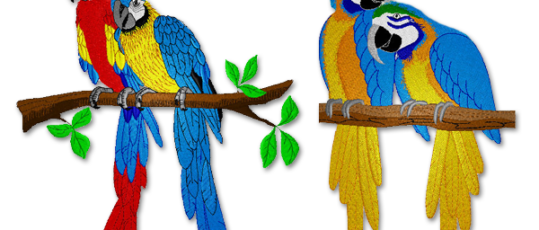Top Quality Digitizing for Embroidery: Professional Workmanship
Top Quality Digitizing for Embroidery: Professional Workmanship
Blog Article
Streamlining the Art of Needlework Digitizing: Step-by-Step Overview
As modern technology continues to breakthrough, the digitization process has actually ended up being much more accessible, enabling enthusiasts to bring their complex designs to life with simplicity. In this overview, we will unravel the intricacies of embroidery digitizing, damaging down each step systematically to simplify the process and encourage both beginners and seasoned embroiderers alike.
Comprehending Needlework Digitizing Software
Embroidery digitizing software program functions as a critical tool for changing detailed designs right into electronic formats suitable with needlework machines, helping with specific stitching and modification. This specialized software application permits customers to import numerous image file styles, such as JPG or PNG, and convert them right into needlework machine-readable formats like DST, EXP, or PES - Digitizing for Embroidery. By using attributes like stitch modifying, rug alternatives, and string color choice, digitizing software enables users to manage every element of the layout procedure
Additionally, progressed embroidery digitizing software application uses devices for developing complex designs, adjusting stitch thickness, and including detailed information. Customers can additionally sneak peek the layout prior to sewing it out, making sure precision and minimizing mistakes. In addition, many software application provide automated attributes that aid improve the digitizing process, saving effort and time.
Understanding the capabilities of needlework digitizing software program is essential for achieving premium cause embroidery projects. By understanding this device, embroidery enthusiasts and professionals can release their imagination and bring complex designs to life with accuracy and performance.

Selecting the Right Design Documents
After acquainting on your own with the abilities of needlework digitizing software application, the next essential action in the procedure is picking the ideal style apply for your project. Digitizing for Embroidery. When choosing a design declare embroidery digitizing, it's important to consider the intricacy of the layout, the dimension of the last product, and the kind of fabric you will certainly be functioning with
For complex styles with great details, a high-resolution image or vector documents is advised to make sure that the needlework device can accurately recreate the design. Furthermore, the size of the last item plays a considerable role in picking the ideal style file. Larger designs may require greater resolution data to preserve clearness and sharpness.
Moreover, the kind of material you will certainly be embroidering on influences the selection of design documents. Different materials may call for adjustments in the layout documents to guarantee that the stitches are effectively aligned and the design looks like planned. By very carefully picking the best design documents based on these elements, you can set on your own up for a successful embroidery digitizing process.
Digitizing Tools and Strategies
Utilizing specialized software application and accuracy strategies, digitizing devices are vital in changing detailed layouts right into embroidery-ready files. Embroidery digitizing software application, such as Wilcom, Hatch, or Embrilliance, offers the needed platform to convert artwork into stitch data. These programs provide functions like stitch editing and enhancing, underlay choices, and lettering devices to make certain his explanation the design equates flawlessly onto fabric.
One of the crucial strategies in digitizing is creating a clear path for the needlework machine to follow. This involves digitizing each aspect of the style with accuracy, determining stitch types, thickness, and instructions. By utilizing tools like digitizing tablets or software-specific plugins, embroiderers can achieve a high level of precision in their digitized layouts.
In addition, understanding the art of underlay sewing is critical for producing quality needlework. Underlay sewing stabilizes the fabric and develops a structure for the style, guaranteeing that the end product is both visually appealing and long-lasting. By understanding these digitizing devices and methods, embroiderers can raise their craft and bring intricate designs to life with accuracy and effectiveness.
Personalizing Stitch Types and Instructions
Having established a structure in digitizing devices and methods, a critical aspect beforehand needlework workmanship depends on customizing stitch kinds and instructions with accuracy and purpose. The option review of stitch kinds can dramatically affect the overall appearance and appearance of the embroidered design. Satin stitches, recognized for their smooth and glossy finish, job well for developing borders and message. On the other hand, fill stitches are excellent for covering bigger areas successfully. By tactically integrating these stitch types, embroiderers can achieve depth and dimension in their layouts.
In addition, the instructions of stitches plays a vital duty in enhancing the visual appeal of the final needlework. By trying out with different stitch angles and patterns, embroiderers can bring their designs to life with impressive detail and ins and out.
Screening and Refining Your Digitized Style
To make sure the accuracy and quality of your digitized layout, comprehensive testing and refinement are essential action in the needlework digitizing procedure. When you have finished the digitization of your layout, it is critical to examine it prior to waging the actual embroidery. Examining permits you to determine any kind of potential concerns such as string breaks, sew density troubles, or layout distortions that may affect the final outcome.

After testing, it is important to improve your digitized style based on the feedback from the examination sew-out. This may involve tweaking sew setups, readjusting thickness, or making modifications over at this website to the overall design to attain the preferred outcome. By repeating with testing and improvement, you can fine-tune your digitized design to excellence before moving on with the actual embroidery procedure.
Final Thought
To conclude, understanding the art of embroidery digitizing requires an extensive understanding of the software, picking the best layout data, utilizing digitizing devices and methods, tailoring stitch types and instructions, and screening and fine-tuning the digitized design. By following these steps, embroiderers can simplify the digitizing process and develop top notch embroidered layouts with accuracy and performance.
Report this page